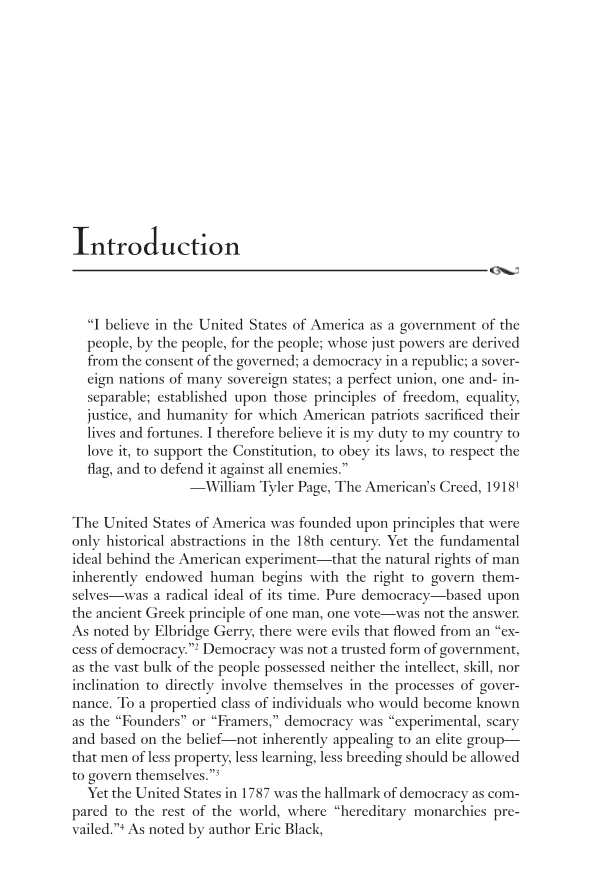Introduction “I believe in the United States of America as a government of the people, by the people, for the people whose just powers are derived from the consent of the governed a democracy in a republic a sover- eign nations of many sovereign states a perfect union, one and- in- separable established upon those principles of freedom, equality, justice, and humanity for which American patriots sacrificed their lives and fortunes. I therefore believe it is my duty to my country to love it, to support the Constitution, to obey its laws, to respect the flag, and to defend it against all enemies.” —William Tyler Page, The American’s Creed, 19181 The United States of America was founded upon principles that were only historical abstractions in the 18th century. Yet the fundamental ideal behind the American experiment—that the natural rights of man inherently endowed human begins with the right to govern them- selves—was a radical ideal of its time. Pure democracy—based upon the ancient Greek principle of one man, one vote—was not the answer. As noted by Elbridge Gerry, there were evils that flowed from an “ex- cess of democracy.”2 Democracy was not a trusted form of government, as the vast bulk of the people possessed neither the intellect, skill, nor inclination to directly involve themselves in the processes of gover- nance. To a propertied class of individuals who would become known as the “Founders” or “Framers,” democracy was “experimental, scary and based on the belief—not inherently appealing to an elite group— that men of less property, less learning, less breeding should be allowed to govern themselves.”3 Yet the United States in 1787 was the hallmark of democracy as com- pared to the rest of the world, where “hereditary monarchies pre- vailed.”4 As noted by author Eric Black,
Document Details My Account Print multiple pages
Print
You have printed 0 times in the last 24 hours.
Your print count will reset on at .
You may print 0 more time(s) before then.
You may print a maximum of 0 pages at a time.














































































































































































































































































